
What if the classroom was a disco?
by Melinda Reid, Anastasia Murney, and Aneshka Mora
- View Melinda Reid's Biography
Melinda Reid is a writer, researcher, and teacher based on Wangal and Gadigal land with a special interest in performance art, radical pedagogies, and contemporary visual culture.
- View Anastasia Murney's Biography
Anastasia Murney is a writer and teacher living on Gadigal land.
- View Aneshka Mora's Biography
Aneshka Mora is scholar based in Dharawal Country working in the intersection of art, institutional critique, social ecologies and decolonial methodologies.
What if the classroom was a disco?
Melinda Reid, Anastasia Murney, and Aneshka Mora
You started this fire down in my soul.
Now can't you see it's burning out of control?
— Harold Melvin and The Blue Notes / Thelma Houston, Don't Leave Me This Way, 1975 / 1986
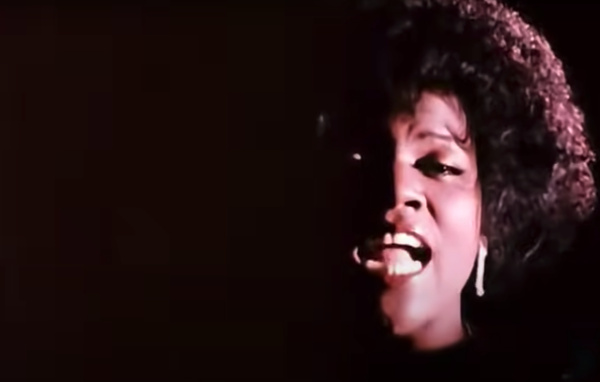
Gloria Gaynor, I Will Survive, music video, 1978.
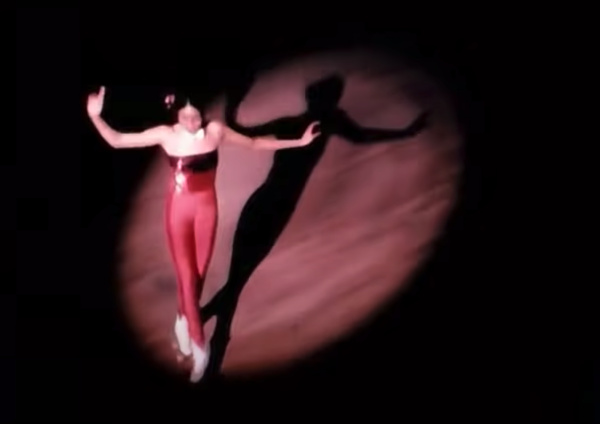
Gloria Gaynor, I Will Survive, music video, 1978.
The impact of the coronavirus pandemic felt slow and then fast. We transitioned to online teaching overnight. One of our first online tutorials was on 'the educational turn' and artist-initiated schools. It was a strange and ironic context to be learning about radical pedagogical imaginaries as we fumbled through classes run on Microsoft Teams. It felt like the utopian energies of this topic were suddenly squeezed into a rigid, dystopian format. Around the same time, we found a distant comrade in Professor Michael W. Bruening, who teaches history at the Missouri University of Science and Technology. Like us, Bruening learnt that he would have to conduct his classes via Zoom for the foreseeable future. In March 2020, he uploaded a video to YouTube of himself playing a cover of Gloria Gaynor's 1978 disco classic, I Will Survive (Bruening 2020a). Gaynor's original song is propelled by dramatic strings and a thumping chorus about her will to survive in the face of heartbreak. In their music video, Gaynor performs the first verse with her face dramatically semi-illuminated in magenta light. The scene is almost Caravaggesque. As the beat kicks in, the video is interspersed with images of a lone roller skater dressed in a pink sequined bandeau and a white bow tie. The figure slowly and elegantly spins underneath a spotlight. The video—and the song—is a memorable mix of rousing defiance and melancholia.
For his pandemic-era cover, Bruening sits in the weak blue glow of a home office computer. He strums a guitar and serenades the camera about his own calamity:
You gave me two days to adjust, to move everything online.
Did you think I'd crumble?
Did you think I'd lay down and die?
Oh no, not I. I will survive.
Oh, as long as I know how to Zoom, I know I'll be alive.
In 2020, our collective interest in disco coincided with a period of multiple overlapping crises of different scales and intensities. The murder of George Floyd in the United States and the resurgence of Black Lives Matter activism. The devastation of the Black Summer bushfires across the east coast of Australia, a visceral forecast of escalating climate catastrophes. The start of the coronavirus pandemic and the aggressive restructuring of Australian universities.
We are writing while precariously employed as sessional lecturers, tutors, and researchers across a range of universities in Sydney. We write in between casual contracts, around overlapping teaching schedules, and largely online. We dip in and out of a sprawling Google doc. We trade links and trawl through SoundCloud. We make YouTube and Spotify playlists. We chat over the phone and over Zoom. We go dancing. Our project follows an era of '(pre)COVID disco nostalgia' pop albums.1 We notice disco filtering into post-internet memes.2 Our group chat is an archive of weird disco references: Did you hear Beyonce sampled Donna Summer? Should we buy tickets for Frank Booker's set at Club 77? Honcho Disko is on at the Imperial! The Foo Fighters are forming a Bee Gees cover band called the Dee Gees. Did you know Kylie's new album is titled Disco? I'm getting targeted ads for decorative disco ball mushrooms. We are mapping the resurgence and restyling of disco in ways that feel wrong, but also very right. We keep a folder of low-resolution images from old music videos uploaded to YouTube. The digitisation process makes the videos look softer, dreamier. The colour bleeds into the sequins. Everything seems to shimmer. We screenshot the blur of moving bodies, open mouths, flaring lights, and swinging hips. To us, these images feel warm and inviting. Is disco a place? Is it a mood? A politics? An ethics?
We have been thinking about how to infuse our teaching practice with the principles of disco. We have written a not-quite-manifesto, taking structural cues from disco anthems charged with passionate revolt and refusal, imbued with sadness and suffering. They offer radical affirmations of pleasure, joy, and silliness. We rewrite them into labour torch songs and find the subversive potential within. We wonder how to translate the rhythmic and emotional sensibilities of these songs into the classroom. Disco is both a method and a place we reach for, like a utopia, both "someplace and no-place" (Duncombe 2013, 148).
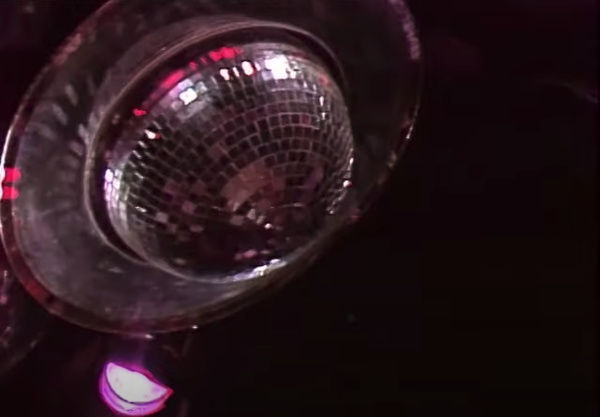
Peaches and Herb, Shake Your Groove Thing, performed on The Midnight Special, c. 1978.
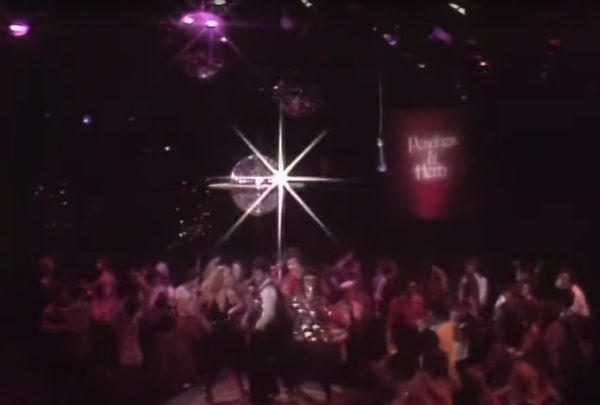
Peaches and Herb, Shake Your Groove Thing, performed on The Midnight Special, c. 1978.
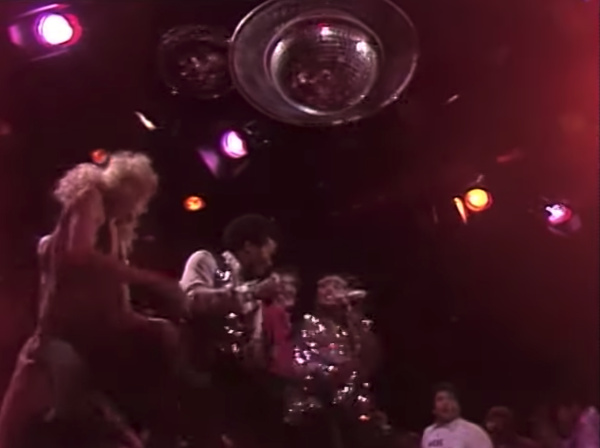
Peaches and Herb, Shake Your Groove Thing, performed on The Midnight Special, c. 1978.
At first I was afraid, I was petrified
Survival is plugging holes. It is updating course materials for online and hybrid delivery, it is packing and unpacking equipment, it is setting up webcams and microphones, it is switching audio inputs, it is filling out contracts, online profiles, applying and re-applying for the same job, it is creating content and learning material where a course is left blank, it is writing lectures, planning tutorials, adding and amending links, marking, moderating, meeting to moderate. It is answering student emails and performing impromptu pastoral care. It is requesting access to course outlines, requesting more autonomy, requesting more support, requesting recognition of the invisible labour being performed...
A problem arises when 'survival' becomes neoliberal adaptation (oh, as long as I know how to Zoom, I know I'll be alive). We reconnect with Bruening five months deeper into the pandemic. This time, he has covered Katy Perry's Hot and Cold (retitled Open and Closed). He exhibits less optimism and more frustration with management: you change your mind with each PowerPoint slide... twice the work at half the pay, it gets harder each day (Bruening 2020b).
For the most part, the transition to online teaching was a struggle that was unevenly felt, passed onto the shoulders of a casualised workforce (or 'adjunctification' in the United States)—the academic foot soldiers of the neoliberal university. The financial shock of coronavirus in 2020 led to an aggressive restructuring of universities, exempt from government relief packages. This translated into a loss of over 40,000 jobs across the sector in Australia. Moreover, women, who are already overrepresented in casualised work, experienced disproportionate job cuts (Littleton and Standford 2021). In the months and years following this process, we noticed the exploitation of 'redundancy' as justification for slashing the workforce. In many cases, the work has not disappeared but has been redistributed. So, the 'I' in I Will Survive is the worker who has managed to keep their job and is straining under the weight of someone else's job, resulting in widespread cases of burnout. As Erin Bartram (2023) writes, this is the effect of "intentional systemic understaffing" producing "a phantom pain where your colleagues should be."
We relate to disco as an endurance genre. Disco provides a repository of songs that compel the listener to just keep dancing.3 As a space, discos were dominated by never-ending mixes of songs blended together by disc jockeys intent on keeping people on the dancefloor for hours at a time, or until they were too exhausted to keep going.4 There is a difference between the extractivist endurance that is required in the neoliberal workplace and the endurance of the dancefloor. Dancing is tiring yet nourishing, a compulsive, unalienated labour, similar to Fred Moten and Stefano Harney's (2013, 110) speculative renegotiation of 'study' as the convergence of working, dancing, and suffering. 'Disco endurance' is forging the social and affective bonds that make it possible to keep dancing.5
What kinds of bonds are forged in the university? Gaynor's tale of heartbreak resonates with Inger Mewburn's (2011) metaphor of the university as a 'bad boyfriend.' In 2011, she wrote: "teaching ability is like a good personality—you are grateful for it after you have known the person for a while, but it won't make you take them home from the disco." More than a decade on, in 2023, in the midst of nationwide strikes for better working conditions, Jack Kirne (quoted in Lauer 2023), a sessional academic from Deakin University, offers an escalation of this metaphor, describing, "the kind of system where you are constantly being gaslit; it's like an abusive relationship."
For us, Gaynor's I Will Survive is instructive because she stands her ground in spite of the fear. The opening lines of the song feature Gaynor quivering, at first I was afraid, I was petrified. As the song progresses, she strengthens her resolve: I should have changed that stupid lock, I should have made you leave your key. She evicts her boyfriend from her home (or, in our interpretation, her workplace). We often ask ourselves: why are we staying in a job that makes us feel invisible and exploited? Why should we put up with this? At the same time, what if we don't want to leave the university? We still believe in the transformative potential of learning together. The challenge is how to break up with the system—the bad boyfriend—and claim a space on solid ground. Then, we ask ourselves: what would it mean to stop plugging holes, to refuse to smooth out the crisis, and instead let it burn?
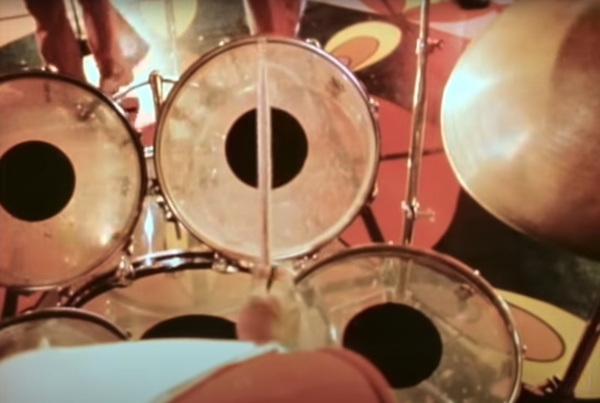
The Trammps, Disco Inferno music video, 1976.
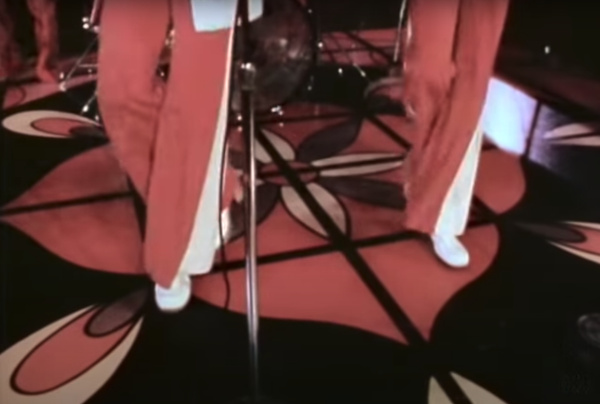
The Trammps, Disco Inferno music video, 1976.
Burn baby burn
One of the first times I went dancing 'post-pandemic' was a few months after our local restrictions eased. I arrived on the dancefloor relatively early in the evening and was surprised to find the dancefloor packed tight. I squeezed into the crush of bodies and quickly felt the familiar muggy heat of the dancefloor. Sweat, salty kisses, and spilt drinks quickly evaporate. The dancefloor is fundamentally a hot place. Everyone is busy getting parched. The main agenda is ecstatically rubbing our backs and bums up against each other, like kindling trying to start a fire.
In early 2018, a tweet from author Ryan North gained traction for claiming that the Latin words disco inferno roughly translate to the English phrase "I learn from hell." In the tweet, North reveals that this only happens when the words are rolled back and forth through Google Translate. This sounds ominous and foreboding. Hell is a learning detour; to learn from hell is to learn through suffering. Hell could also be the point of commencement, where our project starts. We must learn (and therefore dance) ourselves out of hell.
We go scavenging for other translations of disco and inferno. What has come to be known as the 'disco era' was relatively short-lived, its peak spanning from 1972 to 1979. As a musical genre, disco comprises heterogenous influences, drawing on jazz, soul, gospel, and funk. It is most recognisable as danceable, full of up-beat rhythms, syncopated basslines, synthesisers, and repetitive vocals. As Tan Lin (2008, 83) writes, disco pioneered mixing techniques and synthetic sounds that became commonplace in house and electronic music during the 1980s and 90s. Disco is more than a music genre; it is a subculture and a social ethos. During the early 1970s, disco flourished in queer underground club scenes in New York and Philadelphia, offering a style of dance that encouraged freeform, autonomous movement and spontaneous connection, breaking free of heterosexual couple formations (Lawrence 2011, 233). The disco is also a place, a destination. The term is a shortened form of the French noun discothèque, referring to a dance party or club. And discothèque shares an etymological root with the term bibliothèque. A library of books, a library of music records. It is perhaps not so surprising that disco should be a site of learning.
Inferno also has roots in Latin as an adjective—infernus—used to describe something hellish or fiery. In Dante Alighieri's epic poem, The Divine Comedy (1320/2015), the poet is reluctantly guided through an inferno that burns beyond the gates of hell.6 When the poet emerges from his detour through the inferno, he describes returning to a bright world illuminated by stars in the sky (Alighieri 1320/2015, 171). In dialogue with Dante's poems, Andrew Brooks ventures into his own version of hell in Inferno (2021). In this book, the inferno hits closer to home—or rather, hits closer to work. Brooks' (2021, 19) poems are laced with love songs, party songs, ballads, and bangers, swinging from Mariah Carey to Bruce Springsteen. In Inferno, there is a slippery distinction between the fire that engulfs, choking oxygen out of the air, and the fire that inspires love and rage, making us want to dance and smash things. The fire that gives us energy, clarity, and passion. I learn from hell. Fire is destruction and creation in one movement. On this note, Kathryn Yusoff and Nigel Clark (2018, 8) reflect on the disdain for free-burning fire in the eighteenth and nineteenth centuries, writing "that many of us have come to see fire as loss rather than renewal... is bound at once to Western ideas of ecology and economy." They offer the figure of the pyrosexual as key to renegotiating the relationship between fire and sex on a warming planet: firstly, to consider fire as 'unmanaged' and exuberant sexual desire, the unleashing of libidinal energies; second, fire as queer reproductive logic that 'jumps' species and is not grounded in heteropatriarchal genealogies. While we are not focusing specifically on ecological crisis, we are thinking about the literal and metaphorical properties of fire—as weapon and fertiliser—in a more pervasive register of crisis.
Yusoff and Clark's work is fruitful for thinking about the fiery conflation of the classroom and the dancefloor. We think of fire as loss and renewal, as rage and passion, as the unbridling of 'excessive' energies and the remaking of social configurations in ways that do not consolidate the edifice of the institution but bring it down. As such, classrooms are kindling for spot fires of dissent that might 'jump' and conjoin with other fires, growing bigger and hotter. The point is to disrupt the logic of consumption and accumulation and look for an alternative practice of acting in social communion.
While Gaynor's I Will Survive extols perseverance, the Trammps' lyrics for Disco Inferno (1976) are a call to action:
I heard somebody say:
Burn baby burn, disco inferno.
Burn baby burn, burn that mother down!7
The Trammps revel in ruination, fanning the flames. If North's tweeted mistranslation is reinserted back into the Trammps' lyrics, the resolution for change intensifies: Burn, baby, burn. Learn through suffering. Burn baby burn. Burn that mother down. Suffering is, to some extent, unavoidable. In fact, under the conditions of imminent ecological collapse, economic precarity, social alienation, and feelings of political impotence, suffering is a rational response. In the classroom, to learn through suffering is to help students recognise their own complicity in structural problems as well as how their personal experiences of suffering are linked to larger inequalities. But we do not want to make a virtue of suffering, nor do we wish for the critical potential of suffering to lapse into pity. Again, we are invested in learning ourselves out of hell. We want a pedagogical praxis that recognises the importance of being loved back into the world after suffering. This is what makes renewal possible; this is what makes the fire possible again too. A fire cannot happen without fuel.
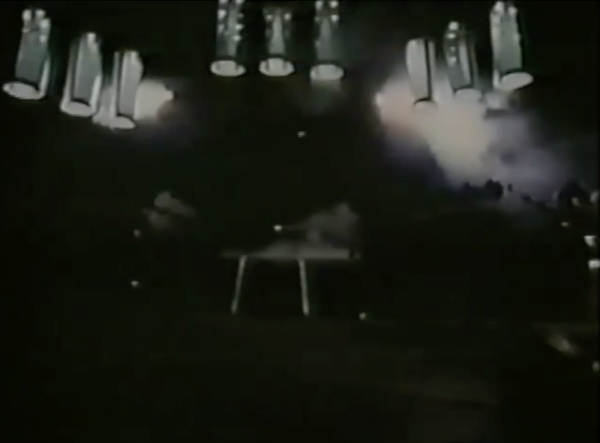
Earth, Wind and Fire, footage from All 'N All Tour, 1977.
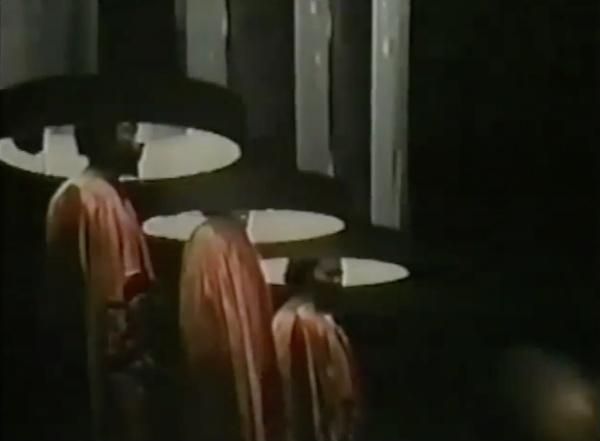
Earth, Wind and Fire, footage from All 'N All Tour, 1977.
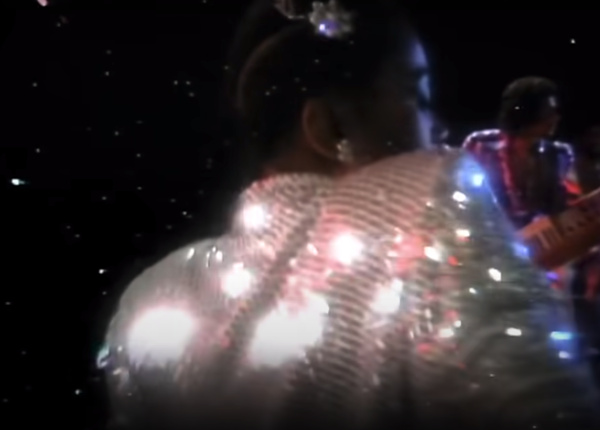
Earth, Wind and Fire, Let's Groove, music video, 1981.
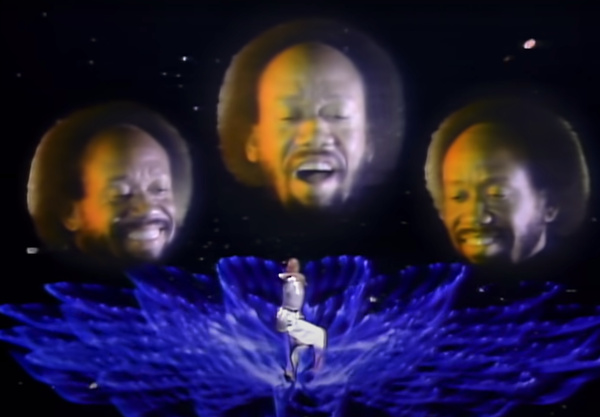
Earth, Wind and Fire, Let's Groove, music video, 1981.
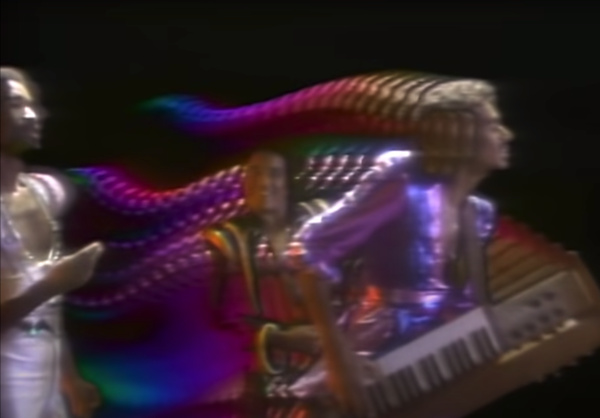
Earth, Wind and Fire, Let's Groove music video, 1981.
I find romance when I start to dance in Boogie Wonderland
I was out dancing at a club for a friend's birthday. After a little while, I realised how profoundly embodied I felt. I was acutely aware of the way my body was moving to the sound. In this blissed out state, I was relishing each movement. I felt as if my body existed specifically to annotate music in space. But when I really relaxed into the beat and felt at home in the crowd, I began to feel as if I had evaporated. I became an extension of the music, a figment of lights and lasers, a thing made more of shapes than limbs, a porous vehicle for the kinetic energy vibrating through everyone on the dancefloor.
Earth, Wind and Fire had a reputation for extravagant live shows. In 1977, the band toured with the magician Doug Henning who specialised in illusions and designed a floating pyramid above the stage. At the beginning of the show, the band were encased inside individual cylinders that were lowered to the stage like aliens descending from a spaceship. Earth, Wind and Fire's distinctive aesthetic drew together science fiction motifs and ancient Egyptian insignia, adding sequins and saturated neon to 1960s flower child culture. In 1981, the band released Let's Groove with a colourful, kaleidoscopic video. Set in outer space, the performers wear flamboyant suits with protruding gold and silver shoulder pads. The fantastical motion graphics were cutting edge at the time. As the band dance and play their instruments, their bodies blur, creating rainbow, iridescent snakes that mimic their movements. They appear to be dissolving into a cosmic non-space. We like to think of this video as the sumptuous visual expression of Earth, Wind and Fire's 1979 hit Boogie Wonderland. The lyrics articulate a place where music, dancing, and love melt away the disappointments of work and life.
They sing:
Midnight creeps so slowly into hearts of men
Who need more than they get
Daylight deals a bad hand to a woman
Who has laid too many bets
...
All the love in the world can't be gone
All the need to be loved can't be wrong
All the records are playing and my heart keeps saying
"Boogie Wonderland, Wonderland!"8
The exact location of Boogie Wonderland is unclear, but we know that we want to go there. Tavia Nyong'o (2008, 108) reflects on disco as an interface that transforms and extends the human faculties, to feel oneself becoming "an exhilarating extension into an environment aided by the auxiliary organs of the mirror ball, the DJ, the drugs, and so on." As the self dissipates into the dancefloor, it is recomposed into what Peter Shapiro (2005, 185) describes as a "polymorphous, polyracial, polysexual mass." [The meaning of mass, for us, is twofold. On the one hand, it refers to the assemblage of dancing bodies, an abstraction of limbs slicked together with sweat and soundwaves. On the other hand, it is a form of communion (a meeting of flesh and boogie spirit). We think of Earth, Wind and Fire descending to the stage in flowing amber robes—ethereal priests and priestesses from another dimension. As Maurice White sings in Boogie Wonderland: you say your prayers though you don't care, you dance and shake the hurt. Dance and shake the hurt. White was an ardent spiritualist, chasing the celestial through astrology, Christian mysticism, Taoism, and Buddhism, and merging this pursuit with a materialist commitment to social justice. He reflects on the progressive undoing of segregation in 1974 and writes: "civil rights advancement is one thing, but healing is another. I was determined that EW&F's musical pulpit would provide some healing" (White 2016, n.p.).
We think of the spaces of disco as spaces for healing, imagination, and connection. We skim through black and white photos of rooms filled with raised arms, balloons, and glinting mirror balls. We look at expansive clubs decked out with glowing dancefloors, lightning struck ceilings, and kitschy design features. We linger on photos of nightclubs after everyone has left – cavernous, industrial spaces littered with broken glass, seeming to breathe a sigh of release. We yearn for the disco as a social and material place. In New York, Francis Grasso started The Sanctuary in a former German Baptist church, a spectacular and decadent space, setting up the DJ booth on the altar. Xenon, the club in which Gaynor's I Will Survive roller skater spins, was another repurposed venue – a former porn theatre. The owners installed a giant spaceship in the centre of the space. Its better-known rival, Studio 54, a highly popular and lucrative post-Saturday Night Fever disco, attracted celebrities and a more affluent clientele. However, Tim Lawrence (2016) inaugurates The Loft as the birthplace of the New York dance music scene. It was the home of David Mancuso, who began hosting parties in the late 1960s which evolved into invite-only discos in the 1970s. Unlike its glamorous successors, The Loft was a humble and intimate space. Lawrence (2016) recounts meeting Mancuso: "he led me to immediately wonder if I'd ever met anyone whose discussion of dance culture was so firmly rooted in ideas of community, integration and social potential." The Loft was a space for outcasts and, for queer and trans folk, a sanctuary from police violence. Mancuso was committed to creating a comfortable and ethical space, remaking the idea of home and the family along with it. This is the kind of disco praxis we are aiming for and what we hope to transport into our teaching practice.
The church, the sanctuary, the spaceship, the home. We think about these spaces as sketches of boogie wonderland, manifesting the values we want to feed into the classroom. To feel safe and supported, to inspire hope and imagination, to make pliable social and political norms. We dream of new and exuberant worlds. This labour of worldmaking must be anchored in bodies. Prior to the disco era, Bill Brewster and Frank Broughton (2006, 138-139) describe how disc jockeys functioned as "musical waiters" who served songs to the crowd. Disco ushered in a more dynamic, reciprocal relationship between DJ and dancer, wherein the DJ would read the room. This is instructive for breaking out of the neoliberal imperative to deliver 'content' and hierarchical, transmission style learning, tutors 'depositing' knowledge into 'empty vessel' tutees.9 The dialogue between DJ and dancer reminds us of the visual effects in Let's Groove where the minutiae of every movement becomes intensified. This could be interpreted as being sensitive to the ripple of conversation in the classroom and being alert to small cues: a smile, a nod, a slight frown, a flash of realisation, of angst, discomfort, excitement. This is the reciprocal magic of the classroom. We don't want to sound too utopian. Or perhaps we do?
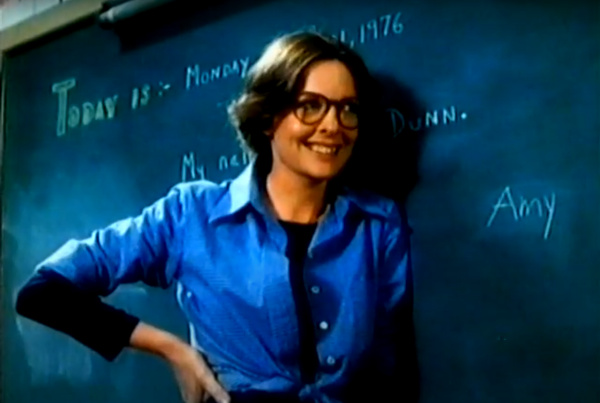
Dir. Richard Brooks, Looking for Mr. Goodbar, 1977, perf. Diane Keaton, Richard Gere.
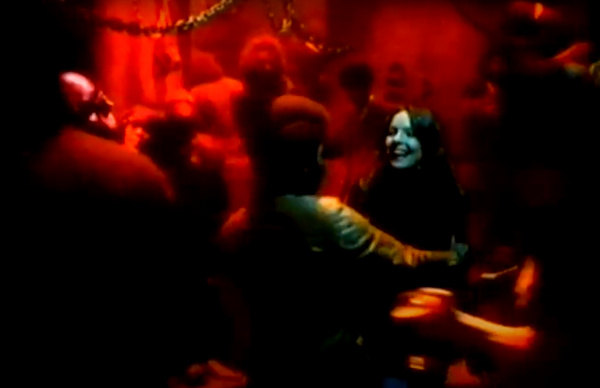
Dir. Richard Brooks, Looking for Mr. Goodbar, 1977, perf. Diane Keaton, Richard Gere.
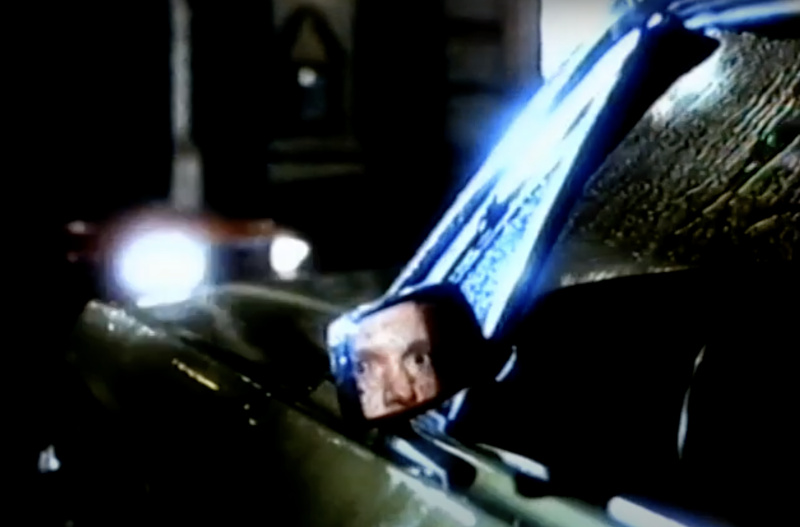
Dir. Richard Brooks, Looking for Mr. Goodbar, 1977, perf. Diane Keaton, Richard Gere.
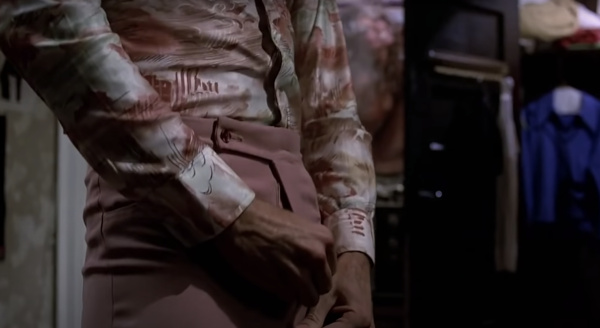
Dir. John Badham, Saturday Night Fever, 1977, perf. John Travolta.
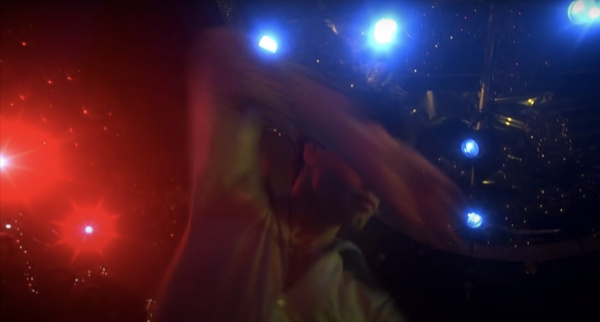
Dir. John Badham, Saturday Night Fever, 1977, perf. John Travolta.
Life going nowhere, somebody help me
I rifle through my notes app to locate the drunk half-sentences I wrote after leaving the club, skin tingling and sweat evaporating fast in the cool air. Sometimes I can't shirk the defensiveness I feel on the dancefloor, when (mostly) men take up so much space. I tell myself to relax, to accept the ebb and flow of the dancefloor but then I ask why should this man who cannot hold his space take up my space. I am holding space for my friends but I am also holding space against the toxic cis white men, or what Mckenzie Wark (2023, 3) calls 'punishers', who dominate the club. Of course, I do not want to be territorial and think in terms of 'my' space, I want to embrace the disco spirit of improvisation and connection and spontaneous affection. I want to trust strangers but it's hard.
In spite of its sonic and visual effervescence, Boogie Wonderland, we discover, has surprisingly sinister roots. The song was inspired by the 1977 crime drama Looking for Mr. Goodbar, based on Judith Rossner's 1975 novel about a teacher's disco and drug-fuelled sexual awakening, and eventual rape and murder. One of the co-writers of the song, Allee Willis (quoted in Wiser 2008), explains: "when I saw Mr Goodbar, I got kind of fascinated with people who did go to clubs every night, whose life was kind of falling apart, but they lived for the night life (...). So if you really look at the lyrics... it's not a happy song at all." The path of the protagonist Theresa Dunn (played by Diane Keaton) is modelled on the actual murder of Roseann Quinn, a teacher who was stabbed multiple times in her New York apartment by a man she met in a singles bar in 1973.
Both the novel and film are packaged as 'precautionary tales' for women about the dangers of promiscuous sex with strange men. In 1975, The New York Times called it a "stunning psychological study of a woman's passive complicity in her own death." This sounds like a version of the misogynistic 'asking for it' line, charging women as responsible for the harm committed against them. A central theme in the coverage of the novel and the film is the 'nice girl out-of-place,' emphasising a disconnect between her life as a teacher and her life on the dancefloor. This 'double life' is supposed to be shocking and irreconcilable. This is emphasised in the film by Theresa's abusive boyfriend, Tony who remarks, "A teacher of little kids cruising crumby bars? Jesus Christ, no wonder this country's all screwed up." We want to wrest Theresa (and Quinn) out of this condescending moralistic framing, which equates her participation in nightlife with self-destruction. Why shouldn't she want to unwind, drink, dance, and fuck? What would it mean to repair the connection between the disco and the classroom? This is not to make light of the bad things that happen to Theresa (nor Quinn), but to reframe the demonised dancefloor as offering genuine solace, transformation, and liberation.
The same year that Looking for Mr. Goodbar was released, John Travolta famously swaggered down the streets of Brooklyn while the Bee Gees sang: well, you can tell by the way I use my walk, I'm a woman's man, no time to talk.10 The protagonist of Saturday Night Fever is a young working-class man with an aptitude for stylish strutting, dancing, and polyester suits. We're expected to sympathise with Tony Manero, who is angry, insecure, and stuck in a dead-end job (life going nowhere, somebody help me). The film follows his efforts to win a dancing competition at the 2001 Odyssey discothèque. In between scenes of Manero spinning and performing knee drops on light-up club floors, women are victims of sexual objectification and violence. They are aids to his success, or they are discarded. In both Saturday Night Fever and Looking for Mr Goodbar, both Tony and Theresa seek refuge in clubs and sexual revelries, but their fates are polar opposite. Theresa's story ends with her rape and murder, while Tony and his partner Stephanie win the dancing competition but forfeit the trophy when he realises the judges have snubbed a more talented Puerto-Rican couple. He gets to be a champion and a dignified loser. In both films, straight white characters are centred, but only straight white men can move freely through the disco.11
Saturday Night Fever exemplifies the historical exploitation and theft of disco from Black, Latinx, and queer communities. Disco was coaxed out into the open and then repackaged as a patriarchal heteronormative commodity. Michael Hobbs and Sarah Marshall (2020) refer to this era as "mall disco," a kind of disco cut off from its underground roots and slotted into suburbia. Saturday Night Fever was based on Nik Cohn's 'Tribal Rites of the New Saturday Night' published in New York Magazine in 1976, an immediate sensation. It was, however, a sham. Cohn wrote a piece of fiction masquerading as journalism. The basis of John Travolta's character is Vincent, a disco hero fleshed out from Cohn's superficial observation of a man in flared pants standing outside a club in Brooklyn. Rather than seeing the disco as a reprieve from work, as in Looking for Mr Goodbar, Cohn constructs the disco as an extension of work, a space to be moulded and shaped in Vincent's own image. His interpretation of the dancefloor is striking in its militarism: Vincent gathers "his troops," "barked out orders," "they formed strict ranks... like so many guardsmen on parade," and at last, he retires, "like a general reviewing a battlefield." Vincent is the one, Cohn (1976/2008) writes, "who set things straight." Indeed, this is what Cohn and Saturday Night Fever did to disco. Travolta inaugurates specific poses, crystallising the amorphous and improvisational energies into static shapes. The film also reinforces heterosexual coupledom, halting and reversing disco's queer unravelling of these conservative dancefloor conventions.
Tim Lawrence (2003, 305) argues that Saturday Night Fever is "not so much about dance culture as about escaping dance culture... As such the film ends with a sober condemnation of the lifestyle that it supposedly celebrates." What is so threatening about dancing? The disco is depicted as a threat because it encourages movement in different, unpredictable shapes, choosing a new partner each night, sometimes each song. Tony Manero tries to 'set things straight' before abandoning the discotheque as a waste of time. We want to push back against the idea of the disco as mere hedonistic escapism, a useless pastime (a complaint leveraged towards our own disciplines, the arts and humanities). In a way, however, the sad and sinister stories of Tony and Theresa prevent us from veering too far into disco as a whimsical thought experiment. We must remember that our boogie wonderland is fleeting and precarious. This doesn't make it any less worthwhile. We need it for all of the women, queer and trans folk, and people of colour who are crowded off the dancefloor. We need to hold space for knowledges that are embodied and open-ended.
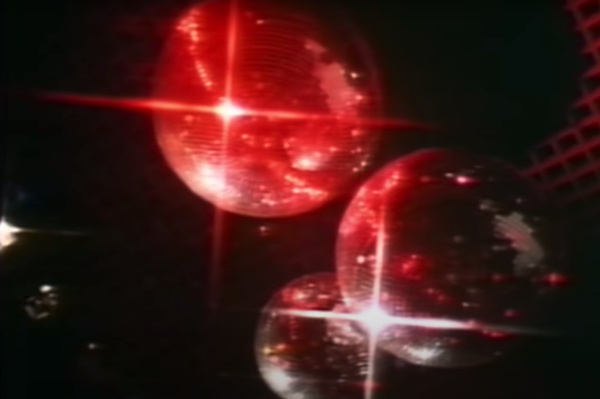
Sylvester, You Make Me Feel, Mighty Real music video, 1978.
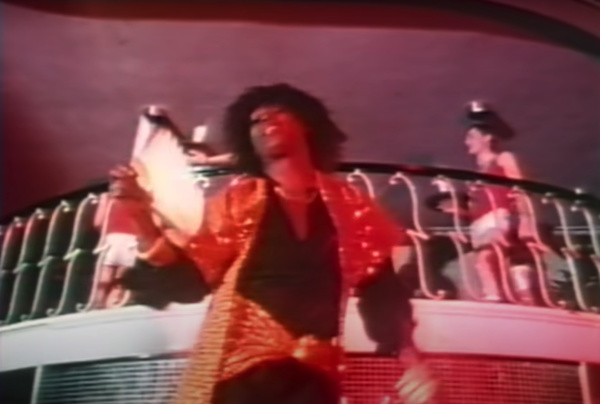
Sylvester, You Make Me Feel, Mighty Real music video, 1978.
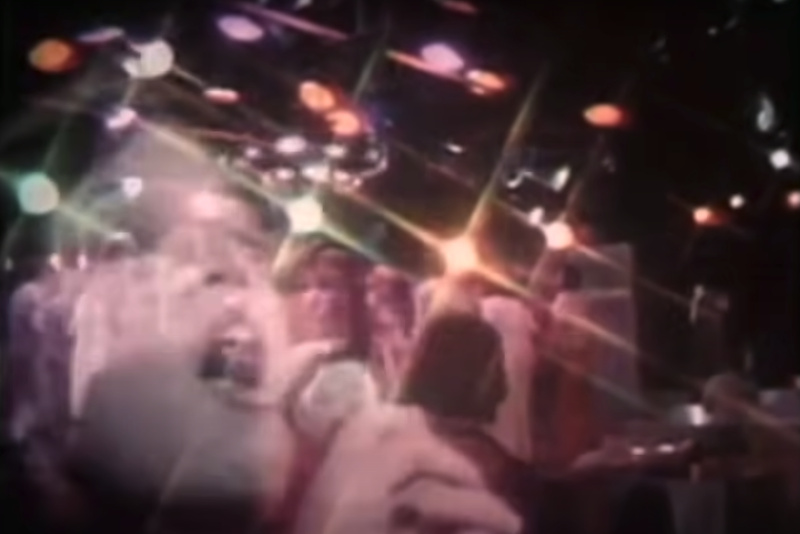
Vicki Sue Robinson, Turn the Beat Around music video, 1976.
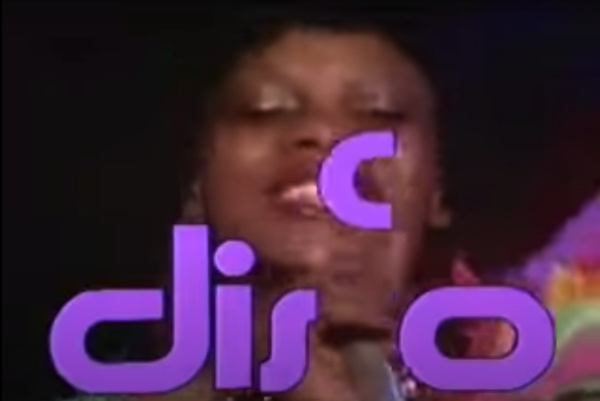
Ottawan, D.I.S.C.O music video, 1980.
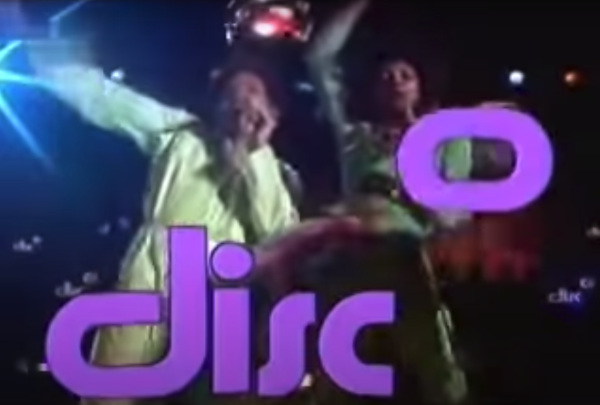
Ottawan, D.I.S.C.O music video, 1980.
Hot, hot, hot stuff!
I started playing disco songs as a morale boosting 'class bell' during my first semester of online teaching. The first time I did this was with a class of honours students. We were a few months into emergency remote classes and completely exhausted. Earlier in the week, I'd stumbled on Serban Ghenea's remixes of songs by the Bee Gees. He made the songs sound somehow fuller, weightier. On a whim, I played Night Fever through my laptop speakers as we returned from a planned break. My students responded with laughter, some even performed appreciative dance moves. The Zoom call became a tiny disco.
Disco has come to be perceived as too flamboyant, too queer, too erotic, too bodily, too romantic, and too utopian to be taken seriously.12 As the 1970s drew to a close, disco reached the height of its commercial appeal, but also fell victim to so-called 'discophobia.' This backlash erupted visibly at 'Disco Demolition Night' in 1979, a baseball game stunt that turned into a riot at Comiskey Park organised by disgruntled rock radio shock jock Steve Dahl. This stunt took place in Chicago on 12th July, 1979 and culminated in the destruction of a crate of 'disco records' collected in exchange for discounted entry to the game (however, many of the records were not disco records, but simply records produced by Black artists). At half-time, Dahl marched into the centre of the baseball field dressed in army fatigues, and lit fireworks under the crate of records, thereby 'demolishing' disco. Surrounding Dahl was a stadium crammed with young white men chanting "disco sucks!" and unfurling homemade 'Disco Sucks' banners. The explosion triggered a riot; the crowd stormed the field and ripped up the seats, resulting in the cancellation of the rest of the baseball game. Nadine Hubbs (2007, 231) describes this event as not so much an attack on disco, but rather a general attack on "the racial other, (...) 'foreign' values, and (...) 'disco fags'." As an expression of racism and homophobia, Disco Demolition Night sought to instantiate rock as real, true, and proper music.
Richard Dyer (1995, 407) reflects on the cultural politics of disco and observes: "it's not just that people whose politics I broadly share don't like disco, they manage to imply that it is politically beyond the pale to like it." In the 1970s, except for a handful of music journalists with limited readership, there was an absence of serious engagement with disco. Brewster and Broughton (2006, 201) write that major critics rarely brought their "critical faculties to bear on a music that was made for the body not the mind." What does the accusation of 'silliness' suggest about the politics of excess? What does it mean to be too much?
We want to exploit the line between silly and serious thinking, troubling the rationalist separation between body and mind. For us, to delight in silliness is a critical moment, to think and move in different, unexpected registers and venture new methods. To open space for silliness is to ask, what if...? Again, contra Manero's efforts to 'set things straight,' we resolve to embrace the mess, and to approach the world of disco as full of – sometimes illegible and nonsensical – potential. In The Queer Art of Failure, Jack Halberstam draws on popular culture to critique standards of 'success' and 'failure' that confirm and bolster heteronormative capitalism. He argues that "terms like serious and rigorous tend to be code words ... for disciplinary correctness; they signal a form of training and learning that conforms to what is already known according to approved methods of knowing, but they do not allow for visionary insights or flights of fancy" (Halberstam 2011, 6).
For an exemplar model of serious silliness, we turn to Ottawan, a French Eurodisco duo. One of their (few) hits was D.I.S.C.O (1980), a song released during the twilight of the disco era. The lyrics provide a series of playful and contradictory definitions of disco spelt out as a series of acrostic poems. Simultaneously, the lyrics anthropomorphise disco into a woman named Disco. As a result, each acronym also provides a new list of Disco's personality traits. Each ends in an enthusiastic and ambiguous yell of the letter 'O' (Ohhhh!). We find a video of Ottawan performing featuring big purple letters which spell out disco across the screen while bouncing in time to the music.
According to Ottawan, Disco is a hot mess. She is,
Delirious
Incredible
Superficial
Complicated
Ohhhh!
But also,
Desirable
Irresistible
Super sexy
such a Cutie
Ohhhh!
And sometimes,
Disastrous
Impossible
Super special
Crazy, crazy
Ohhhh!13
Disco is unpredictable, given to remaking herself over and over. Disco has pyrosexual tendencies – she skips and jumps from one mood to the next. Disco teaches us how to struggle and love in difficult times. We think about Theresa and an alternative ending for her. She never goes home, nor back to work. Instead, she stays out dancing all night. She exceeds her human form, sublates into light and sound, and atomises into the warm glow of the discotheque. In effect, she becomes DISCO. She finds boogie wonderland. She haunts the YouTube videos we screenshot, living in the multi-exposure shimmers and light flares embalming musicians and dancers.
One afternoon we linger in an empty classroom after we have finished teaching for the day. We are feeling depleted, but we find solace in Ottawan's silly acrostic lyrics. Each spelling out of disco prompts a regeneration, like a meme repopulating itself with endless possibilities. We begin improvising our own acronyms. We listen to Donna Summer and start clustering words together on the whiteboard—fire, chaos, crisis, nights out dancing together, the music that keeps us going, our favourite disco icons, teaching, the institution, fatigue, and exploitation.
| Disco jockey | ...... Donna |
| Interloper | GlorIa |
| Sleaze bags | .......Sylvester |
| Cuties | .......Chic |
| Outright hotties | .......Ottawan |
| stuDy | ............Destruction |
| recIprocate | ............Inferno |
| ....Solidarity | hot meSs |
| ....Comrades | ......danCefloor |
| ....lOve | ........wOnderland |
| ...Dive | ...aDapt |
| ...Inside | ....fIre |
| ...Sanctuary | ....Scorch |
| ...Crisis | ....Care |
| toO late? | boOgie |
| .......Drumbeat | enDure |
| ..remIx | ..crItical hope |
| ....baSsline | ...Speculative |
| ...synCopation | ...Care |
| The LOft | .bOdily |
We are stealing moments of disco silliness in the cracks of the university. This starts to feel like hot stuff, an illicit pastime.14 Or, perhaps this is the contours of a disco pedagogy that improvises and repurposes existing spaces—like the discos that came before us that turned churches, cinemas, and homes into spaces for gathering and dancing. We are steeped in the intoxicating mirage of boogie wonderland and are working to materialise it. Disco pedagogy necessarily exceeds the boundaries of the neoliberal university and its regimented structures of teaching and learning. We question whether this practice can even be accommodated within it? Can we nourish the porous and pleasurable pedagogical vision we want inside institutions that are so constrained by the cult of speed, knowledge repackaged as content, and the dogged pursuit of 'job-readiness'?
Disco pedagogy invites the best parts of the dancefloor into the classroom: the pleasures of togetherness, enthusiasm, and improvisation. It always takes more time than we are given; it flows through small and large rhythms of realisation. It provides an emotional palette of love, rage, pain, suffering. It is about restoring learning to the body. It involves movement and music and dancing where possible. Disco pedagogy makes space for playlists, memes, gossip, anecdotes, controversies, confessions, and tangents. It eschews anything that resembles being a cop in the classroom, grades, assessments, late penalties, punitive feedback, the bureaucratic requirement for students to 'prove' illness or hardship, survival mode learning, and zombie Zoom rooms. Instead, a disco approach to teaching holds space for love, trust, togetherness, showing up, forgiveness, flexibility, receptiveness, silliness, curiosity, experience for the sake of experience, and learning for the sake of learning.
We have to remember this vision is tethered to disco inferno, to learn through suffering. Fire is destructive and regenerative, and we need both. There is nothing to be gained from denying or ignoring the hellscape of neoliberal education and the scourge of casualisation. On the contrary, it has something to teach us; it teaches us what not to do, what depletes us, how to struggle, how to separate comrades from co-workers, and how to snatch time and space in the nooks and crannies of institutions that need us but don't want us.
The next timetabled tutorial begins to trickle into the classroom and forces us to halt the flow of ideas, so we rub out our improvised DISCOs. We find that some of the words linger on the whiteboard despite our attempts to erase them. Among them are 'sCarce' and 'Ordeal', but also 'danCefloor' and 'utOpia'. This is where we land for now. Burn, baby, burn. Learn through suffering. Burn baby burn. Burn that mother down.
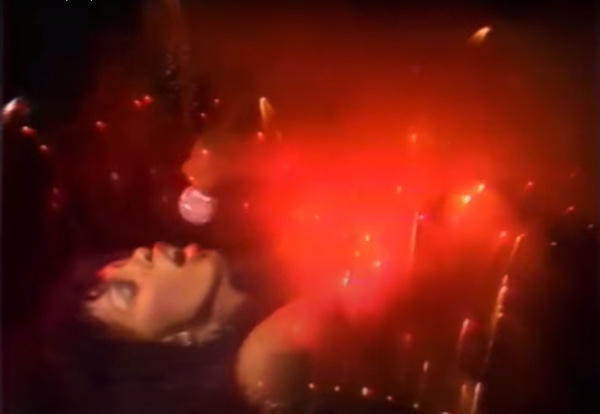
Donna Summer, Hot Stuff, live performance, date unknown.
Works cited
Alighieri, Dante. 2015. The Divine Comedy, trans. Clive James, London: Picador.
Bartram, Erin. 2023. "A Profession, If You Can Keep It", Contingent Magazine, Last Modified 7 January 2023.
Brewster, Bill, and Frank Broughton. 2009. Last Night A DJ Saved My Life: The History of the Disco Jockey, New York: Grove Press.
British Library. 2023. "Catalogue of Illuminated Manuscripts." Last Modified 2023.
Brooks, Andrew. 2021. Inferno, Ashfield: Rosa Press.
Bruening, Michael. 2020a. "I Will Survive, Coronavirus version for teachers going online", YouTube, Last Modified 16 March 2020,
Bruening, Michael. 2020b. "'Opening and Closed"for fall 2020 teachers (to Katy Perry's"Hot and Cold")", YouTube, Last Modified 9 August.
Cohn, Nik. 2008. "Tribal Rites of the New Saturday Night" (7 June 1976), New York Magazine, Last Modified 8 April 2008.
Duncombe, Stephen. 2013. "The Anarchist Geography of No-Place," in The Anarchist Turn, eds. Jacob Blumenfeld, Chiara Bottici, and Simon Critchley. London: Pluto Press.
Dyer, Richard. 1995. "In Defense of Disco," in Out in Culture: Gay, Lesbian and Queer Essays on Popular Culture, eds. Corey K. Creekmur and Alexander Doty, Durham and London: Duke University Press, 407-415.
Freire, Paulo. 2000. Pedagogy of the Oppressed, trans. Myra Bergman Ramos, New York: Bloomsbury.
Halberstam, Jack. 2011. The Queer Art of Failure, Durham and London: Duke University Press.
Harney, Stefano, and Fred Moten. 2013. The Undercommons: Fugitive Planning and Black Study, Wivenhoe, New York, and Port Watson: Minor Compositions.
Hobbs, Michael, and Sarah Marshall. 2020. "Disco Demolition Night," You're Wrong About, 3 August 2020.
Hubbs, Nadine. 2007. "'I Will Survive': Musical Mappings of Queer Social Space in a Disco Anthem," Popular Music 26, no. 2 (May): 231-244.
Lauer, Emilie. 2023. "'Like an abusive relationship': Deakin casual on working conditions," Campus Review, Last Modified 3 May 2023.
Lawrence, Tim. 2003. Love Saves the Day: A history of American dance music culture, 1970-1979, Durham and London: Duke University Press.
Lawrence, Tim. 2011. "Disco and the Queering of the Dancefloor," Cultural Studies 25, no.2: 230-243.
Lawrence, Tim. 2016. "The Legacy of David Mancuso by Tim Lawrence", Tim Lawrence, Last Modified 21 November 2016,
Lin, Tan. 2008 "Disco as an Operating System, Part One," Criticism 50, no.1: 83-100.
Littleton, Eliza, and Jim Standford. 2021. "An Avoidable Catastrophe: Pandemic Job Losses in Higher Education and their Consequences", Manuka: The Australia Institute.
Mewburn, Inger. 2011. "Is the University a bad boyfriend?" The Thesis Whisperer, Last Modified 9 August 2011.
The New York Times. 1975. "The New York Times Best Seller List," The New York Times, 22 June 1975, 37, "Sunday June 22nd, 1975," Times Machine: The New York Times, Last Modified 30 October 2022.
North, Ryan (@ryanqnorth). 2018. "I learned today that "disco inferno" in Latin translates as "I learn from hell", but it appears Google Translate is trying to HIDE THE TRUTH", Twitter, Last Modified 3 April 2018.
Nyong'o, Tavia. 2008. "I Feel Love: Disco and its Discontents," Criticism 50, no.1 ("Disco," Winter): 101-112.
Shapiro, Peter. 2005. Turn The Beat Around: The Secret History of Disco, London: Faber and Faber.
Sierzputowski, Konrad. 2021. "The pandemic disco: Trauma and hope during the COVID-19 crisis," Popular Music History 14, no. 1: 42-59.
Stone, Elizabeth. 1978. 'It's Still Hard to Grow Up Italian' New York Times, 17 December 1978.
Wark, McKenzie. 2023. Raving, Durham, NC: Duke University Press.
White, Maurice. 2016. My Life with Earth, Wind and Fire, New York: HarperCollins, E-book.
Willis, Allee, and Jon Lind, 1979. Earth, Wind and Fire and The Emotions, "Boogie Wonderland," I Am, ARC/Columbia Records.
Wiser, Carl. 2008. "Allee Willis: Boogie Wonderland", Songfacts, Last Modified 14 August 2008.
Yusoff, Kathryn, and Nigel Clark. 2018. "Queer Fire: Ecology, Combustion and Pyrosexual Desire," Feminist Review 118, no.1: 7-24.
Footnotes
- For example, Beyonce's RENAISSANCE (2022), Lady Gaga's Chromatica (2020), Dua Lipa's Future Nostalgia (2020), Kylie Minogue's DISCO (2020), Róisín Murphy's Róisín Machine (2020), Parcels' Day/Night (2021), and Jessie Ware's What's Your Pleasure? (2020). See Konrad Sierzputowski, "The pandemic disco: Trauma and hope during the COVID-19 crisis," Popular Music History 14, no. 1 (2021): 43. ↩
- A particular favourite of ours is Boney M's Rasputin (1978)–a song that transforms Grigori Rasputin (the mystic confidante of the last Tsarina) into Russia's greatest love machine–-which has functioned as an internet meme hinge for over a decade across Tumblr, Reddit, Twitter, YouTube, and, most recently, TikTok. ↩
- Freddie Perren, Peaches and Herb, "Shake Your Groove Thing," 2 Hot, 1978, Polydor. ↩
- Peter Shapiro credits Terry Noel with innovating mixing during the 1960s while DJing at Arthur and Francis Grasso with beat mixing and slip cueing while working at Salvation II. See Peter Shapiro, Turn The Beat Around: The Secret History of Disco (London: Faber and Faber, 2005), 11, 17. ↩
- We also think of Manu Dibango's Soul Makossa (1972) in which the Duala word makossa (which refers to a Cameroonian style of dancing) is repeated many times, Chic's Dance Dance (1977) which is dominated by the couplet, dance, dance, dance, dance/keep on, keep on!, and Dance (Disco Heat) (1978) in which Sylvester sings that they want to dance through the night 'til morning light shines on me! ↩
- In an illuminated version of Dante's manuscript from (1444-1450) attributed to Priamo della Quercia, Paradiso and Giovanni di Paolo, the fire of the inferno burns within towers that bear a strange resemblance to 'sandstone universities.' See the British Library's Catalogue of Illuminated Manuscripts. ↩
- Leroy Green and Ron 'Have Mercy' Kersey, The Trammps, "Disco Inferno," Disco Inferno, 1976, Atlantic Records. ↩
- Allee Willis and Jon Lind, Earth, Wind and Fire and The Emotions, "Boogie Wonderland," I Am, 1979, ARC/Columbia Records. ↩
- The action of 'depositing' comes from the banking model, the antithesis of Paulo Freire's problem-posing education. See Paulo Freire, Pedagogy of the Oppressed, trans. Myra Bergman Ramos (New York: Bloomsbury, 2000). ↩
- Barry Gibb, Robin Gibb, and Maurice Gibb, Bee Gees, "Stayin' Alive," Saturday Night Fever, 1977, RSO Records. ↩
- It is worth mentioning that while Manero is an Italian-American character, he does not appear to be meaningfully impacted by anti-Italian sentiments which were still pervasive in New York through the 1970s. See Elizabeth Stone's 'It's Still Hard to Grow Up Italian' published in the New York Times, 17 December 1978 (the year after Saturday Night Fever was released). ↩
- See Richard Dyer, "In Defense of Disco," in Out in Culture: Gay, Lesbian and Queer Essays on Popular Culture, eds. Corey K. Creekmur and Alexander Doty, (Durham and London: Duke University Press, 1995), 407-415. ↩
- Daniel Vangarde and Jean Kluger, Ottawan, "D.I.S.C.O," D.I.S.C.O, 1979, Phonogram. ↩
- Pete Bellotte, Harold Faltermeyer, and Keith Forsey, Donna Summer, "Hot Stuff," Bad Girls, 1977, Casablanca Records. ↩

